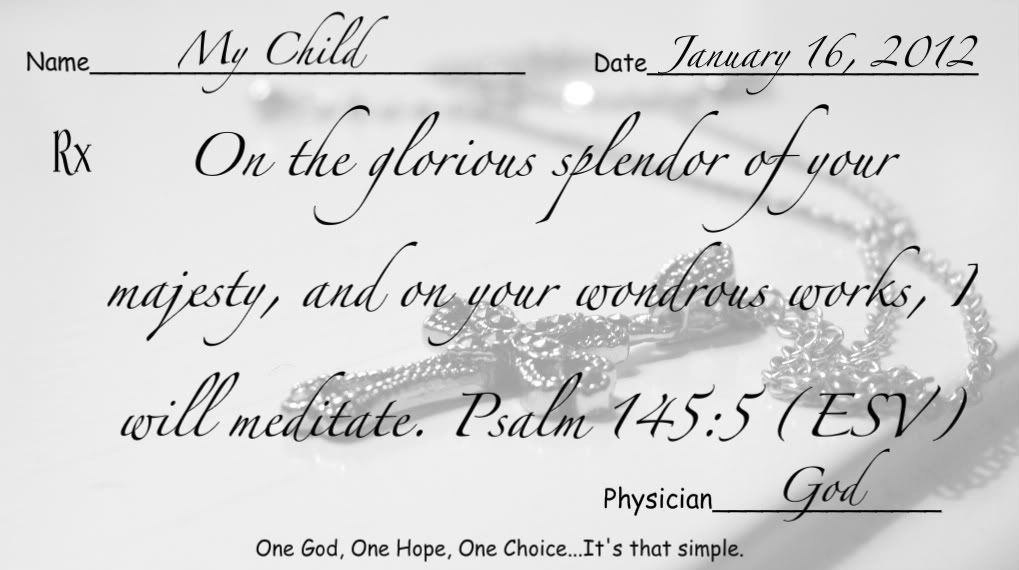As a pharmacist who became the patient for seven years, I gained quite the understanding on depression. If you’ve never experienced it, I’m rejoicing with you! It’s not a place you want to go. If you have experienced it…well, I’m right there with you.
In the gloomy pit of despair and hopelessness that is depression, desperation is born. The desire to be out of that pit is overwhelming. We will do anything to get out.
Prozac, one of the most prescribed medications for depression, was approved by the FDA just as I began practicing. It was the first antidepressant in its class of serotonin reuptake inhibitors. That particular class has grown drastically over the last twenty-two years and has actually spun off into a new class—serotonin-norepinephrine reuptake inhibitors. For a list of the serotonin reuptake inhibitors, click here. For a list of serotonin-norepinephrine reuptake inhibitors, click here.
During my first fourteen years as a pharmacist, I couldn’t begin to tell you how many Prozac, Zoloft, and Paxil prescriptions I filled. I never understood the desperation behind those prescriptions. In the last few years, Cymbalta—one of the newer antidepressants—has gained popularity. Drug companies in the U.S. have invested millions in research, marketing, and advertising making antidepressants the most prescribed class of drugs in our country.
A 2007 article at CNN Health, “CDC: Antidepressants most prescribed drugs in U.S.,” says the following:
According to a government study, antidepressants have become the most commonly prescribed drugs in the United States. They’re prescribed more than drugs to treat high blood pressure, high cholesterol, asthma, or headaches. CNN’s Elizabeth Cohen discusses the CDC study on antidepressants.
In its study, the U.S. Centers for Disease Control and Prevention looked at 2.4 billion drugs prescribed in visits to doctors and hospitals in 2005. Of those, 118 million were for antidepressants.
A 2011 article at Harvard Health Solutions, “Astounding increase in antidepressant use by Americans,” gave the following statistics:
- According to a report by the National Center for Health Statistics (NCHS), the rate of antidepressant use in this country among teens and adults (people ages 12 and older) increased by almost 400% between 1988–1994 and 2005–2008.
- 23% of women in their 40s and 50s take antidepressants, a higher percentage than any other group (by age or sex)
- Women are 2½ times more likely to be taking an antidepressant than men (click here to read a May 2011 article in the Harvard Mental Health Letter about women and depression)
- 14% of non-Hispanic white people take antidepressants compared with just 4% of non-Hispanic blacks and 3% of Mexican Americans
- Less than a third of Americans who are taking a single antidepressants (as opposed to two or more) have seen a mental health professional in the past year
- Antidepressant use does not vary by income status
Bright colors, such as yellow, reflect more light and stimulate the eyes. Yellow is the color that the eye processes first, and is the most luminous and visible color in the spectrum.
Dr. Ronald Dworkin tells the story of a woman who didn’t like the way her husband was handling the family finances. She wanted to start keeping the books herself but didn’t want to insult her husband.The doctor suggested she try an antidepressant to make herself feel better.She got the antidepressant, and she did feel better, said Dr. Dworkin, a Maryland anesthesiologist and senior fellow at Washington’s Hudson Institute, who told the story in his book “Artificial Unhappiness: The Dark Side of the New Happy Class.” But in the meantime, Dworkin says, the woman’s husband led the family into financial ruin.
“Doctors are now medicating unhappiness,” said Dworkin. “Too many people take drugs when they really need to be making changes in their lives.”
We have a choice.
We choose what we see.

